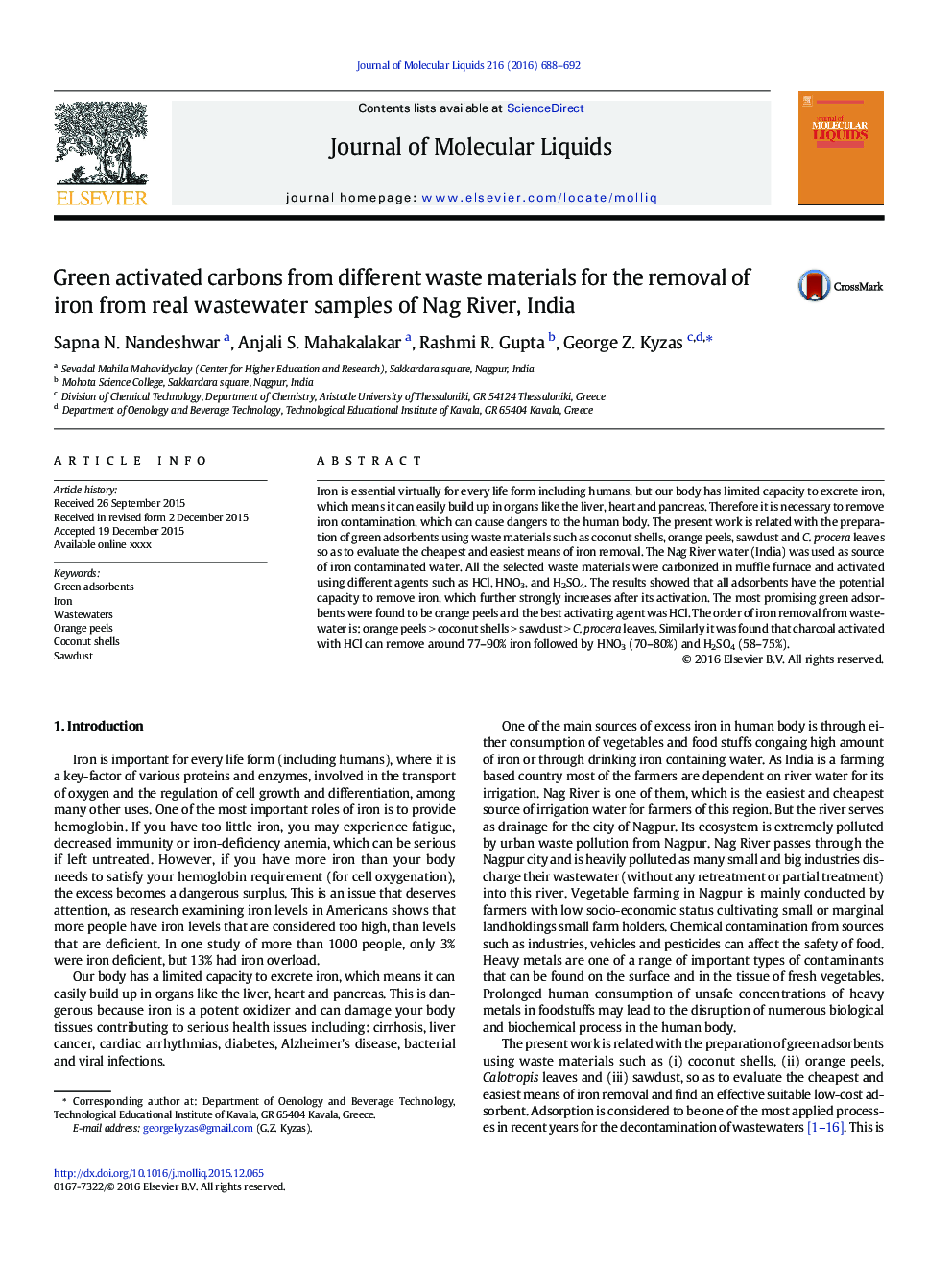| Article ID | Journal | Published Year | Pages | File Type |
|---|---|---|---|---|
| 5410042 | Journal of Molecular Liquids | 2016 | 5 Pages |
Abstract
Iron is essential virtually for every life form including humans, but our body has limited capacity to excrete iron, which means it can easily build up in organs like the liver, heart and pancreas. Therefore it is necessary to remove iron contamination, which can cause dangers to the human body. The present work is related with the preparation of green adsorbents using waste materials such as coconut shells, orange peels, sawdust and C. procera leaves so as to evaluate the cheapest and easiest means of iron removal. The Nag River water (India) was used as source of iron contaminated water. All the selected waste materials were carbonized in muffle furnace and activated using different agents such as HCl, HNO3, and H2SO4. The results showed that all adsorbents have the potential capacity to remove iron, which further strongly increases after its activation. The most promising green adsorbents were found to be orange peels and the best activating agent was HCl. The order of iron removal from wastewater is: orange peels > coconut shells > sawdust > C. procera leaves. Similarly it was found that charcoal activated with HCl can remove around 77-90% iron followed by HNO3 (70-80%) and H2SO4 (58-75%).
Related Topics
Physical Sciences and Engineering
Chemistry
Physical and Theoretical Chemistry
Authors
Sapna N. Nandeshwar, Anjali S. Mahakalakar, Rashmi R. Gupta, George Z. Kyzas,
